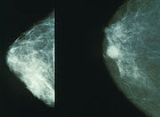tracytrump12
You probably have heard that breast cancer is the second most common cause of death in women in the U.S. This is reason for concern for women. Early breast cancer detection provides the best outcomes in the event it does occur. Is there something you can do for early breast cancer detection? More importantly, is there a way to detect breast cancer propensity even at the earliest signs? Yes, absolutely. It involves checking your 2:16-hydroxyestrone ratio and having breast thermography.
What is the 2:16 -Hydroxyestrone Ratio?
Estrogens are metabolized in the body by various biochemical pathways. There are large variations among both men and women how estrogens are metabolized. One particular estrogen, called estrone, can be metabolized via the healthy 2-hydroxyestrone (2OH-E1) pathway or the unhealthy 16-α-Hydroxyestrone (16-α-OH-E1) pathway. The ratio by which estrogens are metabolized via these pathways can indicate the long-term risk of developing breast cancer. This ratio is called the 2:16-hydroxyestrone ratio. This ratio is an important indicator for early breast cancer detection and prevention. A ratio of 2 or less means a higher risk for breast cancer. This ratio is also an indicator for other estrogen-sensitive cancers such as ovarian, cervical, uterine, prostate and certain head and neck cancers.
source:
What is the 2:16 -Hydroxyestrone Ratio?
Estrogens are metabolized in the body by various biochemical pathways. There are large variations among both men and women how estrogens are metabolized. One particular estrogen, called estrone, can be metabolized via the healthy 2-hydroxyestrone (2OH-E1) pathway or the unhealthy 16-α-Hydroxyestrone (16-α-OH-E1) pathway. The ratio by which estrogens are metabolized via these pathways can indicate the long-term risk of developing breast cancer. This ratio is called the 2:16-hydroxyestrone ratio. This ratio is an important indicator for early breast cancer detection and prevention. A ratio of 2 or less means a higher risk for breast cancer. This ratio is also an indicator for other estrogen-sensitive cancers such as ovarian, cervical, uterine, prostate and certain head and neck cancers.
source:


